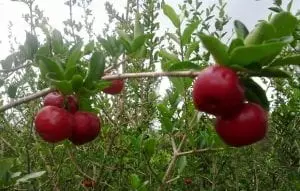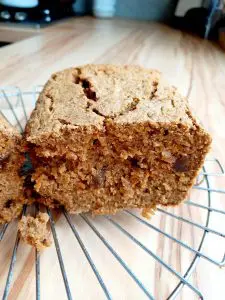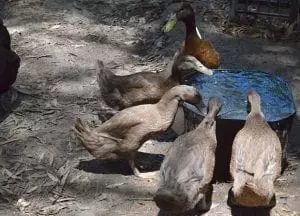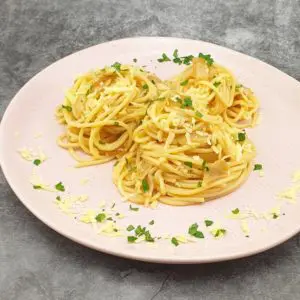Maldison 50
Maldison 50 or Malathion (as it’s called in the USA) is a pesticide commonly used to treat mites and lice in chickens. Maldison is considered by authorities around the world to be a low toxic pesticide with no real evidence it can harm humans if used as directed. However, anecdotally Maldison 50 or Malathion may not be as “safe” as the authorities claim.
I have heard and read accounts from veterinarians and chicken keepers noting cases of poisoning in chickens after being treated with Maldison and this is concerning not just for the health of poultry but also for humans.
In fact, Malathion is the main ingredient in many head lice treatments for humans; although, in some countries, there have been reports of lice possibly becoming resistant to this treatment although the evidence is not conclusive.
Maldison 50 is one of the most common and legally sold targeted treatments for mites and lice on chickens and other poultry in Australia. It’s also used as an effective spray in and around chicken coops/poultry housing.
When used on chickens Maldison 50 is diluted at different rates than when used to treat poultry houses or equipment. Essentially, Maldison 50 is diluted more when used on chickens directly than if used to spray chicken coops.
Annoyingly, the directions for use on the Maldison 50 container sold in Australia is in bulk only (obviously catering for large poultry breeders) and doesn’t have a breakdown into smaller quantities typically used by a backyard chicken keeper with a small flock. Again this demonstrates how overlooked the domestic hobby chicken market really is…
Therefore, I have calculated the dilution rates (or doses) below showing how I mix Maldison 50 when I use this product on my poultry – I stress, this is my calculations in conjunction with the manufacturer’s directions on the product I use and I strongly recommend you read and follow the directions specific to the brand and product on the label you have purchased as my treatment may be different to yours.
Maldison 50 to treat chickens directly
Mix – dilute 5 mils of Maldison 50 in 1 litre (1000 mils) of water.
1 x litre of mixed Maldison 50 with water should treat up to 20 birds.
Directions – Spray the diluted Maldison 50 onto the birds generously concentrating where lice and mites are usually found under wings and around vent. Alternatively, you could dip the birds in a container filled with the mix – this could be a more effective way to treat birds with major infestations. However, as I suggested in the beginning many people have reservations about using Maldison so dipping with this chemical is not something I would advocate doing.
Maldison 50 to treat coops/poultry houses
To spray coop/poultry house dilute 500 mils in 8 litres of water – broken down this equals about 65 mils per 1 litre (1000 mils) water.
Directions – Using a pressure sprayer, thoroughly spray the walls, roosts, and nesting boxes of the chicken coop or poultry house ensuring all crack and crevices where mites, lice, and even ticks may be hiding.
# Process should be repeated in about 10 days to ensure subsequent hatching eggs for mites and lice are killed and the life cycle of the parasites is broken.
# Remember to use breathing masks and gloves for personal protection when treating your flock.
Pestrol (Rotenone) or Derris dust
Again this is a very common treatment for mites and lice on chickens in the form of a powder, which is applied (dusted) on the chicken paying close attention to when mites and lice gather such as under the wings and around the vent.
The main ingredient in Pestrol is Rotenone, which is a naturally occurring substance made from plants and actually is another product developed/founded initially by the Japanese. Rotenone is an effective treatment for mites and lice on poultry (and other pets) and is used in some products to treat head lice and scabies for humans.
Although naturally occurring and considered relatively safe (even organic) I am personally suspicious about how safe Pestrol (Rotenone) really is and I would use it with caution because this product is known to be extremely effective at killing insects and fish.
Plus, I’m adverse to using dusts to treat animals because dust can be inhaled by the animal for several days after application or by us as we interact with them. Worryingly, there have been several medical studies since 2000 and as recent as 2011 showing links between Rotenone and Parkinson's disease and although not conclusive it still gives me a reason to be concerned about the use of any chemical dusts around chickens and humans.
Permethrin-based products
Permethrin is a man-made (synthetic insecticide) from the pyrethrins family which originally is derived from plants/flowers. The natural substance (such as pyrethrum for pest control on vegetables in the home garden) has a short life once applied (usually under 24 hours) and is considered pretty safe overall – even organic. However, permethrin the synthetic substance may have a longer life and be more toxic particularly if it is mixed with other chemicals.
Products made from the pyrethrin family are pretty effective against insects including mites and lice killing on contact but apparently are not absorbed very easily through the skin of humans or animals (except cats, which for some reason it can kill). But by enlarge, this group of pesticides is seen to be low toxic and is a prime ingredient in things like insect sprays around the home or even mosquito repellent.
Still, it doesn’t mean you shouldn’t treat all pyrethrins with caution and it should definitely be used as directed on poultry as I have read overdosing can be fatal to birds. Personally, I would be inclined to look for a pyrethrum (the natural one) based product for chickens rather than a permethrin (synthetic) based product if there was a choice.













